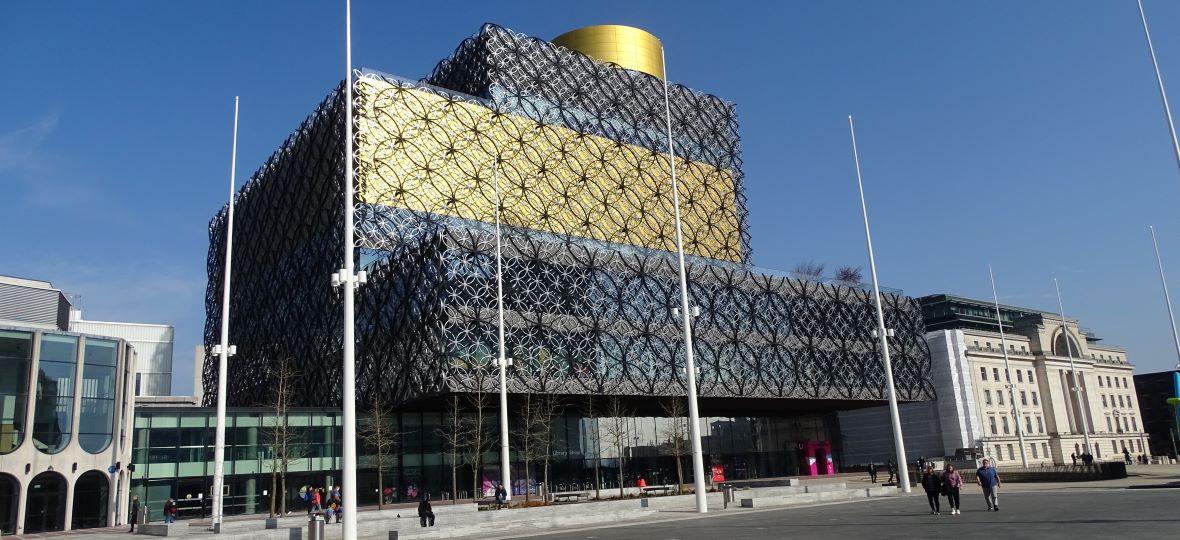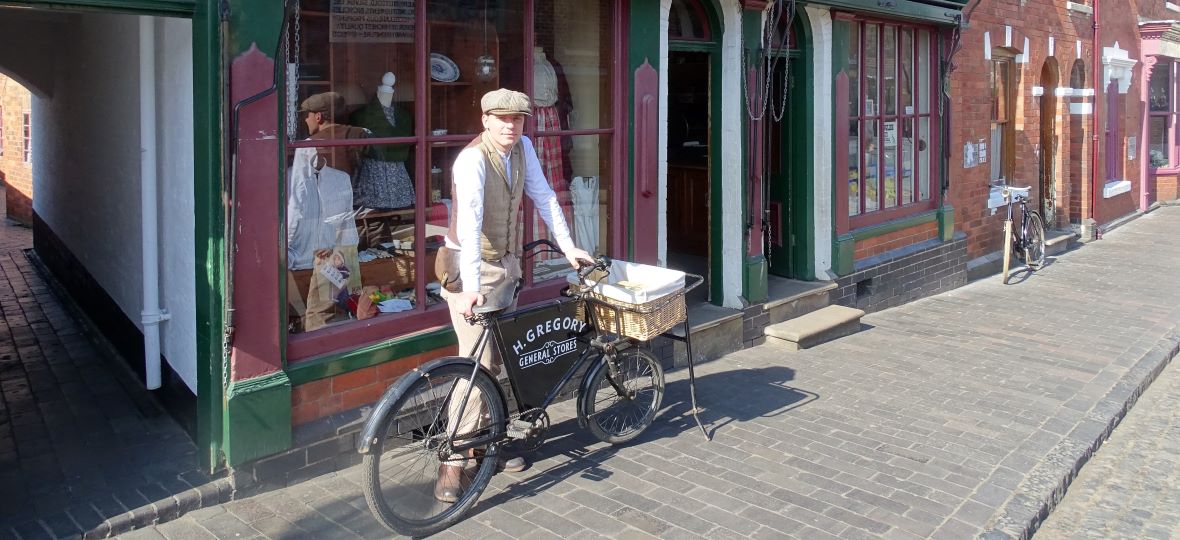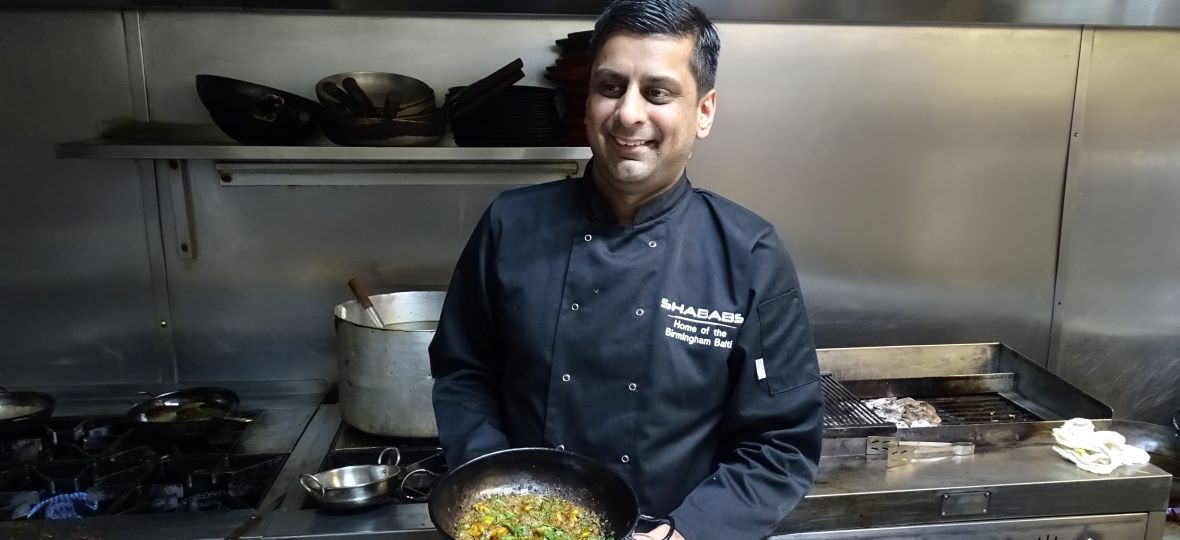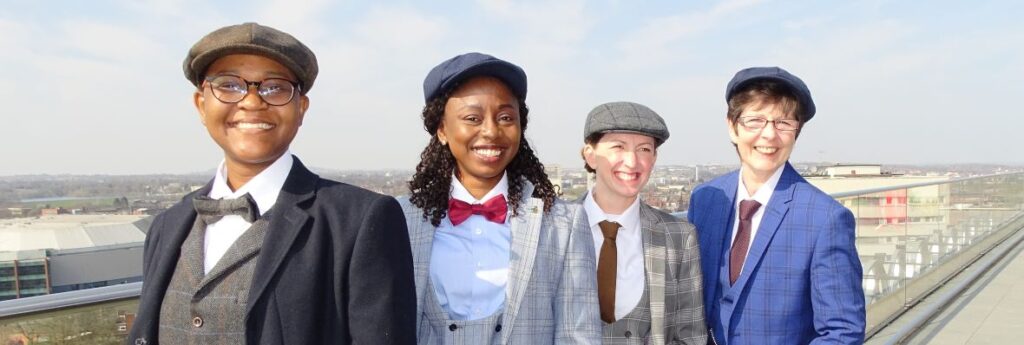It may seem that Birmingham is simply synonymous with “Peaky Blinders,” but rest assured, there’s more to England’s second city than its status as the setting for the popular Depression-era Netflix drama. And as “Brum” gets set to host the Commonwealth Games starting next week month (July 28-Aug. 8), the city is on a trajectory for far greater, and well-deserved, recognition.
Located less that two hours by train from London (and within four hours drive time from 90% of the UK), the city has evolved from the centre of the Industrial Revolution to one of the most architecturally futuristic cities in Britain, while retaining its Victorian heritage, and boasts nine museums, five Michelin-rated restaurants (the most outside of London), more canals than Venice, and, indeed, “all things Peaky Blinders.”
There’s a bustling foodie scene, including the renowned “Balti triangle”; vibrant street art (take a graffiti tour); nearby chocolate nirvana, Cadbury World; and nightlife that’ll have visitors dancing from dusk ‘til dawn, or relaxing at pubs and restaurants in Brindley Place, a picturesque mixed-used development that encompasses both sides of an industrial era canal and connected by a quaint bridge or two.
Indeed, Birmingham today is hardly recognizable to those who may have visited in the past, having undergone a renaissance (along with other British cities like Liverpool, Newcastle, and Glasgow) in recent decades.
“You wouldn’t have imagined a city break (in Birmingham) 20 years ago,” Becky Frall, head of tourism for the West Midlands Growth Company, told Travel Industry Today during a recent visit to the city. And to that end, she believes the that the Commonwealth Games will clearly serve as a “coming out” for the city.
“Either people don’t know about Birmingham, or they have a bad impression of it,” she says matter-of-factly. “We just have to get people in the city (to see the change).”
Failing that, at least in the short term, the Games “will bring us into people’s living rooms and will change the perception of what Birmingham’s all about,” she says, which includes a renewed civic pride amongst “Brummies” at having won the right to host an event that is expected to attract a million people, and, in 2018 had a viewing audience of 1.5 billion.
“It gives residents pride and underpins what they already know, and that energy spills over and provides a focus point that opens up people’s eyes… and those images will be pouring into people’s homes (who are watching the Games). It will plant the seed for people to come back. It starts with sport, but continues with the vibrant culture.”
CITY BREAK
With this in mind, here’s our three-day sneak peak guide to a Birmingham city break (which might be extended with additional day trips to nearby Coventry; Warwick Castle; Ironbridge; and Shakespeare Country, including Stratford-Upon Avon):
City Centre

Birmingham has gone from an industrial hub to a futuristic city full of architectural triumphs, like the dramatic Library of Birmingham and gleaming Bullring and Grand Central, one of the most stylish shopping centres in the world. And the redevelopment shows no sign of slowing with Frall noting that city’s 1960’s brutalist architecture has been systematically stripped away in favour of open, pedestrian-friendly spaces and renovated Victorian structures.
• Library – Birmingham’s cityscape hits new heights at the 10-storey Library of Birmingham, Europe’s largest public library, which is impossible to miss with its standout design. Visitors can (should!) venture up to the rooftop garden for citywide views from one of Birmingham’s highest points. There’s even an entire floor dedicated to one of the region’s most iconic people, William Shakespeare.
• The Roundhouse – A dramatic restoration has turned the historic 19th- century curved building into a spectacular visitor centre and tourist destination.
• Bullring – While roads are measured from stately and impressive Victoria Square, they all seem to lead to Birmingham’s Bullring, also located in the heart of the city and mere minutes from New Street Station. Home to more than 200 stores and restaurants, its neighbour Grand Central also contains more than 60 premium brands. A 2.2-metre-tall bronze Bull, designed by sculptor Laurence Broderick, stands proudly by the Bullring’s entrance.
• The Grand Hotel – The iconic hotel in the city centre has recently relaunched (2021), with sumptuous Victorian and Art Deco interiors and a former guest list that includes everyone from King George VI to Charlie Chaplin and Winston Churchill.
Creative quarter
Digbeth, the city’s creative quarter, is filled to the brim with vibrant street art, independent shops, cafés and bakeries, and bustling brewpubs and bars – all inhabiting transformed Victorian industrial architecture that includes the six-hectare Custard Factory district.
Jewellery Quarter
The national epicentre for jewellery production for more than 250 years and home to more than 700 jewellers and independent retailers, Birmingham’s Jewellery Quarter is located just to the north-west of the city centre and produces an estimated 40% of Britain’s jewellery. In addition to gems of all shapes and sizes, it offers an abundance of unique shopping experiences, as well as a mix of pubs, cafés, galleries. and museums.
Canals
With more than 56 km of canals in Birmingham, and more than 160 km of waterways making up the Birmingham Canal Network, old meets new in Brindley Place/Gas Street Basin. Here visitors can wander towpaths (or kayak) through an industrial heritage area blended with modern architecture, pubs/bars, and restaurants, right in the heart of Birmingham. Moored throughout are narrowboat canal barges, many of which can be chartered, or whose owners hawk crafts and wares and confections (honey, chocolates) to passersby.

Black Country Living Museum
Just north of the city (about a 30-minute drive), in Dudley, is the open-air Black Country Living Museum, which recalls life, both physical and social, in the West Midlands during the Industrial Revolution through historical interpreters (mine manager, chemist, chain maker) and a replica town cobbled together from real buildings transferred from elsewhere in the region, and which includes a working bakery and chippy (renowned for its fish and chips fried in traditional, but now rare, beef drippings). Themed events take pace throughout the year, including behind-the-scenes tours and 1940s weekends.
Peaky Blinders
The original Peaky Blinders gangs can be traced to Birmingham, and many scenes from the hit show were filmed in the city. Peaky Tours looks into the characters behind the TV series for a fascinating insight into the fictional show and the real-life locals that inspired it. Visitors will also find many other key Peaky Blinders sites around the city, including a six-storey mural of Cillian Murphy’s character Tommy Shelby on the walls of a factory in Digbeth, and in (the previously mentioned) Black Country Living Museum. Or perhaps bump into character-actors around town (banner photo) provided by the city.
Football
The home of Aston Villa football club since 1897, Villa Park is one of Britain’s oldest stadiums and sits in the shadow of Aston Hall, a Jacobean stately home. Visitors can go behind-the-scenes on a stadium tour and learn more about one of the 12 founding clubs of Britain’s football league in 1888. During the season, fans can also catch a game at Birmingham City, which plays in the Championship (first) division.
Food

Birmingham is packed with every kind of eatery from street food to fine-dining restaurants, super-stylish bars, and excellent curry houses in its Balti Triangle. In fact, Birmingham and the surrounding area boasts 11 Michelin-starred restaurants and hundreds of restaurants from all over the globe. “Before,” Krall muses, “nobody would have thought of Birmingham as a destination for food!”
• The Balti Triangle – Known as the original home of the Balti curry, a trip to Birmingham wouldn’t be complete without sampling the spiced dish, which is fast-cooked to burn off excess oil and is also as individual as the chef cooking it. Foodies looking to sample the local delicacy can choose from a variety of family-run restaurants, including Shababs, and legendary Adil’s, which is said to have introduced the method of cooking to Britain in 1977. The Triangle spans Stratford, Alcester and Wake Green roads, and includes popular Ladypool Road and Stoney Lane. The area received its name due to the high density of restaurants (over 100) using the Balti technique.
Cadbury World
Chocolate fans will want to visit Cadbury World, an immersive self-guided journey through the magic of chocolate making “from bean to bar,” and including the origins of Cadbury in Birmingham in 1824. Tour highlights include tasting zones, a 4D cinema experience, and the largest collection of Cadbury memorabilia in the world (note: there is no factory tour). The massive attraction, which makes 1.2 million Cadbury Cream Eggs per day, amongst other treats, also boasts the world’s largest Cadbury shop. It can be reached via train from New Street Station to Bourneville in about 15 minutes (plus another 15-minute walk).
Activities
There are tons of attractions in Birmingham, ranging from the Bear Grylls Adventure activity centre (which includes mazes, rock climbing, axe throwing, archery, tank scuba, and more), to LegoLand Discovery Centre, National SEA LIFE Centre, the Birmingham Royal Ballet, opera, and theatre at the Birmingham Hippodrome.
Rev-heads might like the British Motor Museum, National Motorcycle Museum and Jaguar factory tour at Castle Bromwich, while fashion fiends will be interested in the Museum of the Jewellery Quarter and The Lace Guild in Stourbridge. Meanwhile, the Pen Museum is dedicated to the history of calligraphy.
There are countless other cultural institutions, including the Birmingham Museum and Art Gallery, Thinktank science museum, Blakesley Hall Tudor house, and Sarehole Mill, a 250-year-old water mill famous for inspiring former neighbour J.R.R. Tolkein’s Middle Earth.
I DID NOT KNOW THAT
• With six million trees and more than 3,200 hectares of parks and open space, Birmingham is one of the greenest cities in the UK and Europe. Its parks have won gold medals at the Chelsea Flower Show for the last six years
• Birmingham Hippodrome is the busiest and most popular theatre in the UK with more than half a million visitors each year
• More than 36,000 people watch musical performances by the City of Birmingham Symphony Orchestra (CBSO) every year, more than any other UK orchestra
• Birmingham is home to many past and present rock bands and musicians, including Ocean Colour Scene, Duran Duran, ELO, UB40, Black Sabbath (look for the bridge dedicated to Ozzy and the lads), and Laura Mvula.
RELATED STORY: The best Birmingham pub crawl

